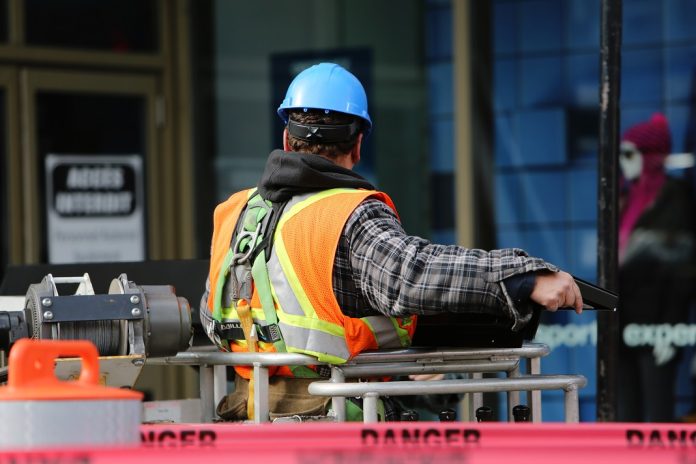by Paul Logan, Health & Safety Operations Manager at Peninsula Ireland
The Health and Safety Authority inspection team visit thousands of workplaces every year. This high level of inspection activity plays a key role in the Health and Safety Authority’s work in the regulation and promotion of health and safety in Irish workplaces.
In this article, we take a look at what to expect from a health and safety inspection and what you can do to ensure your business is always ready should the inspector call.
What will happen during a health and safety inspection?
Inspectors will want to know about the main health and safety issues affecting your workplace along with your own knowledge and experience of the health and safety issues.
The inspector’s overall goal is to assess the measures your business takes to keep employees, customers and anyone who uses your workplace, healthy and safe.
Inspectors are likely to:
- ask about your day-to-day work activity;
- ask your staff about their day-to-day work activity;
- examine possible health risks arising from that work activity;
- examine any control measures that are relevant to your industry.
For instance, an inspector on a construction site may ask about control measures to guard against the risk of working at heights or working around construction dusts including asbestos and silica.
Employers that operate retail facilities could face inquiries about what steps have been taken to protect against the risk of poor manual handling, slips, trips and falls on slippery floors or violence and aggression towards staff.
The inspector will also likely want to carry out some specific examinations including:
- an assessment of the safety of vehicle, machinery and work equipment;
- a review of your business’s health and safety documentation including the safety statement, risk assessments and safety data sheets;
- a review of your maintenance logs for any workplace plant, machinery or equipment; and
- a photographic record of certain measurements and dimensions in work situations.
Inspectors will consult with your safety representative or members of your safety committee as appropriate.
Your safety representative may accompany the inspector during the inspection.
Will I receive advance notice of a health and safety inspection?
Most Health and Safety Authority inspections are unannounced but in certain cases, the inspector will make an appointment to ensure the relevant members of the management team will be available.
During an investigation
During the investigation, you will need to remember that the inspector may seek to exercise certain powers which under health and safety legislation allows them to:
- enter, enquire into, search, examine and inspect your place of work;
- obtain information from employers and employees, if required;
- interview employers and employees about any work activities which led to an accident;
- take witness statements when undertaking their investigation;
- require the production of records and to make and retain copies of these records;
- test and examine any article or substance at the workplace and to remove or retain them if necessary;
- install and maintain monitoring instruments; and
- take samples of the workplace
What if there is something wrong?
Most business owners will receive some relevant advice, either verbally or in writing, about how to make improvements in health and safety.
If an inspector believes there is a serious breach of health and safety standards, they may take enforcement action including seeking an order to stop work.
Enforcement actions include:
- A Report of Inspection setting out areas for improvement and advice about health and safety at work.
- An Improvement Notice or a Contravention Notice for breaches of the legislation giving you a period of time to make improvements.
- A Prohibition Notice where there is a risk of serious personal injury which will stop you doing something until you have made it safe to continue.
- Prosecution through the office of the Director of Public Prosecution (DPP) for failing to comply with the law or not complying with one of the above Notices.
All of the above Notices can be appealed to the District Court if you do not agree with the inspector’s decision.
How to ensure your business is ready for a health and safety inspection?
If you don’t have any health and safety expertise within your business, it’s important to seek an objective assessment of your current level of health and safety compliance.
Simply examining your workplace and your operations will not be enough. It’s important to carefully examine your risk assessment procedures, your health and safety documentation as well as your health and safety records to ensure your business is compliant.
How to maintain health and safety compliance
The Safety, Health and Welfare at Work Act 2005 requires employers to have safe systems of work in place which are planned, organised, performed, maintained and revised as appropriate.
A health and safety inspector will examine the specific risks identified in your risk assessment, safety statement and any other relevant health and safety documentation.
Once the inspector has reviewed these documents, they will assess the control measures you have put in place to reduce the risks and hazards identified in your health and safety documents.
So, to ensure your business is compliant with health and safety legislation, ensure the following:
- Update your risk assessment on an annual basis. (If you have made changes to the workplace before an annual review, you will need to update the risk assessment to take account of any new work activities, processes, premises or equipment.)
- It’s a good idea to seek input from your employees as they will have valuable information on how best to complete their work safely. If there are any changes in work practices, ensure to seek their feedback on any health and safety implications.
- Your safety and health documentation is prepared and in use, e.g. a Safety Statement or other relevant safety and health documentation are prepared, are available for inspection at the workplace or in the relevant vehicle or boat, etc.
- Your health and safety records (details of training courses etc) or any relevant procedures that are documented should likewise be subject to regular review.
- You have a well-developed health and safety management system in your workplace.
- Review the details of any previous inspections and ensure that you have put any recommended control measures in place.









































